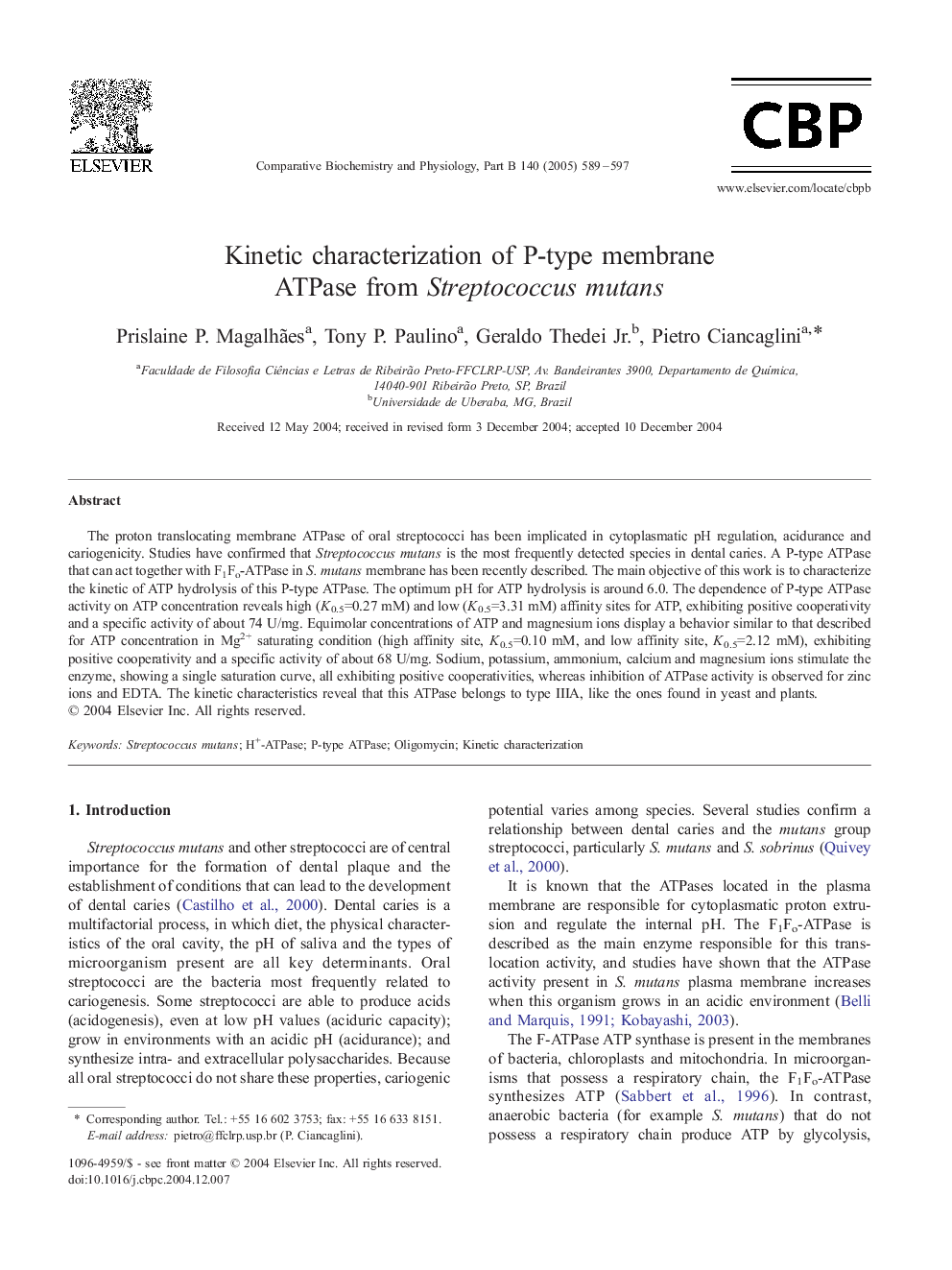| Article ID | Journal | Published Year | Pages | File Type |
|---|---|---|---|---|
| 9889670 | Comparative Biochemistry and Physiology Part B: Biochemistry and Molecular Biology | 2005 | 9 Pages |
Abstract
The proton translocating membrane ATPase of oral streptococci has been implicated in cytoplasmatic pH regulation, acidurance and cariogenicity. Studies have confirmed that Streptococcus mutans is the most frequently detected species in dental caries. A P-type ATPase that can act together with F1Fo-ATPase in S. mutans membrane has been recently described. The main objective of this work is to characterize the kinetic of ATP hydrolysis of this P-type ATPase. The optimum pH for ATP hydrolysis is around 6.0. The dependence of P-type ATPase activity on ATP concentration reveals high (K0.5=0.27 mM) and low (K0.5=3.31 mM) affinity sites for ATP, exhibiting positive cooperativity and a specific activity of about 74 U/mg. Equimolar concentrations of ATP and magnesium ions display a behavior similar to that described for ATP concentration in Mg2+ saturating condition (high affinity site, K0.5=0.10 mM, and low affinity site, K0.5=2.12 mM), exhibiting positive cooperativity and a specific activity of about 68 U/mg. Sodium, potassium, ammonium, calcium and magnesium ions stimulate the enzyme, showing a single saturation curve, all exhibiting positive cooperativities, whereas inhibition of ATPase activity is observed for zinc ions and EDTA. The kinetic characteristics reveal that this ATPase belongs to type IIIA, like the ones found in yeast and plants.
Related Topics
Life Sciences
Biochemistry, Genetics and Molecular Biology
Biochemistry
Authors
Prislaine P. Magalhães, Tony P. Paulino, Geraldo Jr., Pietro Ciancaglini,
